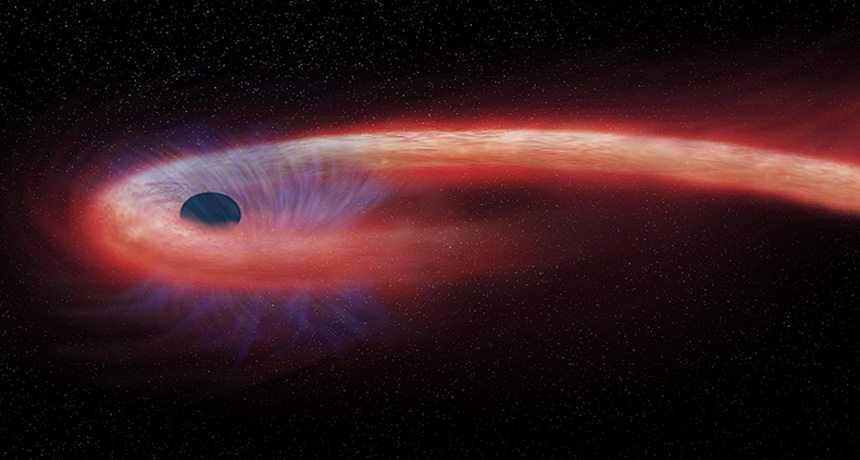
SLOW EATER A supermassive black hole has set a record for the longest meal, slurping on a single star for more than 10 years. In this artist’s illustration of the event, gas from the star (red) falls toward the black hole, while a wind blows the other way (blue).
M. Weiss/CXC/NASA







